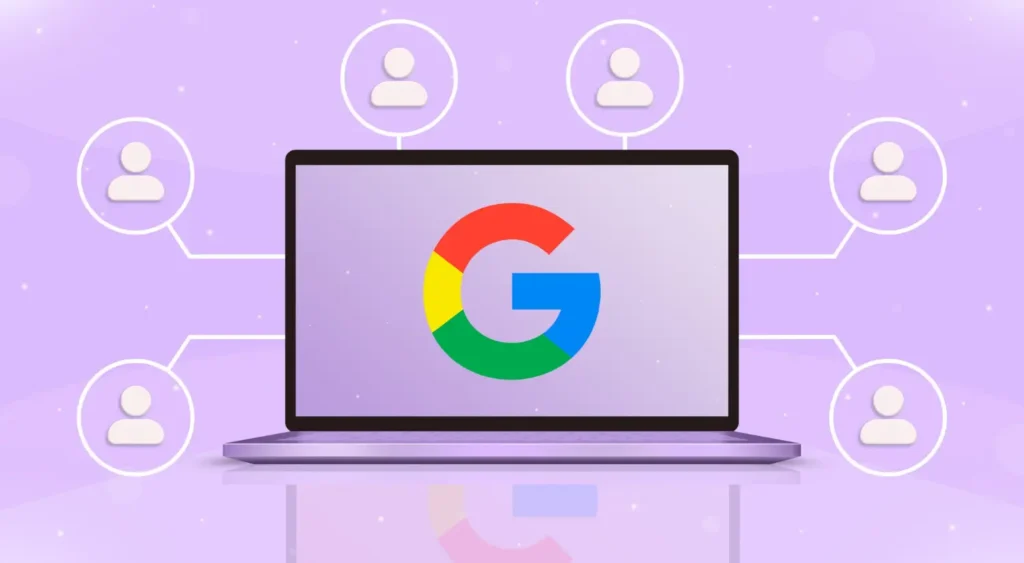If you’re a small business owner in the US, Australia, Gulf, UK, or Europe, you’ve probably wondered: Is SEO dead?
With constant changes in digital marketing, it’s a fair question—especially if you’re in telehealth, wellness, or technology, industries where attracting the right clients is key to growth. The truth? SEO isn’t dead; it’s evolving.
In 2025, it remains a powerful tool to drive warm, targeted traffic to your website—people actively searching for business development, SEO, and web development services to grow organically.
This ultimate guide will break down the latest SEO 2025 trends, backed by insights from Google’s own updates and algorithms. Whether you’re looking to boost your telehealth practice, wellness brand, or tech startup, you’ll find actionable strategies here to stay visible, connect with clients, and grow your business—all in a user-friendly format you can start using today.
Introduction: SEO Is Alive and Adapting
Let’s address the big question upfront: No, SEO is not dead. Google, commanding over 83% of the global search market (per Google’s own data trends), continues to refine its algorithms to deliver better results.
But the SEO of 2025 isn’t the keyword-stuffing game of a decade ago. It’s about quality, relevance, and user experience—driven by AI, mobile searches, and a focus on expertise.
For small business owners like you, this evolution is an opportunity. By adapting to these changes, you can attract a warm audience—clients who are already looking for solutions you offer, whether it’s telehealth consultations, wellness programs, or tech innovations. This guide will explore seven key SEO trends for 2025, offering practical tips to help you grow organically and get your website in front of the right people.
Here’s what we’ll cover:
- AI and Machine Learning in Search
- User Intent and Experience
- Local SEO for Nearby Clients
- Content Quality and E-E-A-T
- Video and Visual Content
- Zero-Click Searches
- Technical SEO Basics
Ready to dive in? Let’s get started.
1. AI and Machine Learning: Smarter Search, Smarter Strategies
Google’s AI advancements, like the Multitask Unified Model (MUM) and Bard AI, are transforming search. These tools help Google understand context and intent, delivering results that match what users really want—not just what they type.
Why It Matters for You
For telehealth, wellness, and tech businesses, AI means your content needs to be precise and helpful. Clients searching for “best telehealth platform” or “wellness apps for stress” expect answers that cut through the noise.
How to Adapt
- Focus on Intent-Driven Content: Write to solve problems. For example, a telehealth business could create a guide: “How to Pick a Telehealth Service for Your Family in 2025.”
- Use Structured Data: Add schema markup (code that helps Google understand your content) to highlight services, reviews, or FAQs. This boosts your chances of appearing in AI-generated results like rich snippets.
Actionable Tip
Create topic clusters. Instead of targeting one keyword like “telehealth,” build a hub page (“Ultimate Guide to Telehealth in 2025”) with linked subtopics (“Benefits of Telehealth” or “Telehealth Security Tips”). This signals expertise to Google’s AI.
2. User Intent and Experience: Put Your Clients First

Google’s algorithms now prioritize content that matches user intent—what people are trying to find—and websites that offer a great experience. This is huge for small businesses aiming to stand out.
Why It Matters for You
If someone searches “wellness coaching near me” or “tech solutions for startups,” they want relevant answers fast. A clunky, slow site or vague content will send them to your competitors.
How to Adapt
- Understand Intent: Break searches into types:
- Informational: “What is telehealth?” (Provide guides or blogs.)
- Transactional: “Book a wellness session” (Add clear CTAs.)
- Navigational: “Find [Your Business Name]” (Optimize your brand presence.)
- Improve UX: Focus on Google’s Core Web Vitals—metrics like page speed, mobile-friendliness, and visual stability. A fast, easy-to-use site keeps visitors engaged.
Actionable Tip
For a telehealth site, create a page like “Mental Health Telehealth Services” with a booking button, client testimonials, and a fast-loading design. Test it with Google’s PageSpeed Insights to ensure top performance.
3. Local SEO 2025: Reach Clients in Your Area
Local SEO is a goldmine for small businesses. With Google’s emphasis on “near me” searches and local results, optimizing for your region can bring clients right to your door—or virtual doorstep.
Why It Matters for You
A wellness clinic in London or a tech consultant in Dubai wants to attract nearby clients. Local SEO 2025 ensures you’re visible when someone searches “telehealth near me” or “tech support in Delaware City.”

How to Adapt
- Claim Your Google My Business (GMB): Set up or update your GMB profile with accurate details—name, address, phone number (NAP)—and add photos or services.
- Encourage Reviews: Ask happy clients to leave positive feedback on GMB. Respond to reviews to show you’re active.
- Use Local Keywords: Optimize pages with phrases like “wellness coaching in Sydney” or “telehealth in Texas.”
Actionable Tip
Create location-specific landing pages. For example, “Telehealth Services in Melbourne” or “Tech Solutions in Manchester” can target clients in those areas while boosting your local rankings. You can read our detailed article here.
4. Content Quality and E-E-A-T: Build Trust
Google’s E-E-A-T framework (Expertise, Authoritativeness, Trustworthiness, Experience) is critical in 2025. High-quality, credible content ranks higher—especially in health and tech fields.
Why It Matters for You
Clients trust authoritative sources. A telehealth provider or wellness coach showing expertise will win over someone searching “reliable online therapy” or “trusted wellness tips.”
How to Adapt
- Show Expertise: Write in-depth articles like “How Telehealth Improves Patient Care” or “Top Tech Trends for Startups in 2025.” Cite studies or your own experience.
- Boost Authority: Add author bios with credentials (e.g., “Dr. Jane Smith, Telehealth Expert”) and earn backlinks from reputable sites in your industry.
- Build Trust: Use HTTPS, display contact info, and link to privacy policies.
Actionable Tip
Publish a case study—e.g., “How We Helped a Wellness Client Grow 30% with SEO”—to showcase real results and expertise. Update your blog quarterly to keep it fresh.
5. Video and Visual Content: Engage and Rank
Video is exploding, and Google’s favoring it in search results. Optimizing video content can set you apart and keep visitors on your site longer.
Why It Matters for You
A telehealth demo video or a wellness tutorial can grab attention when text alone won’t. Clients searching “how to use telehealth” or “yoga for beginners” are likely watching videos.
How to Adapt
- Optimize for YouTube: Create videos like “Telehealth Setup Guide” or “Tech Tools for Small Businesses.” Use keywords in titles, descriptions, and tags.
- Embed on Your Site: Add videos to key pages to boost engagement and dwell time—a signal Google loves.
Actionable Tip
Start a YouTube channel with a series like “Wellness Tips Weekly.” Promote it on your site and social media to drive traffic and build a following.
6. Zero-Click Searches: Win the Instant Answer Game
Zero-click searches—where answers appear directly on Google’s results page via AI Overviews or featured snippets—are rising. This trend challenges businesses to adapt.

Why It Matters for You
Clients searching “what is telehealth?” or “benefits of SEO” might not click through if they get the answer upfront. But optimizing for this can still build brand visibility.
How to Adapt
- Use Q&A Format: Write concise answers to common questions. Example: “What is telehealth? It’s healthcare delivered online via video or chat.”
- Target Featured Snippets: Keep answers short (40-60 words) and use bullet points or tables.
- Add Structured Data: Schema markup for FAQs or how-to guides increases your snippet chances.
Actionable Tip
Create an FAQ page like “Top 10 Telehealth Questions Answered” or “SEO Basics for Small Businesses.” Format it for quick reads to snag those zero-click spots.
7. Technical SEO 2025: Keep Your Site Running Smoothly
Technical SEO ensures Google can find, crawl, and rank your site. It’s the foundation that supports all other efforts.
Why It Matters for You
A slow, broken, or mobile-unfriendly site frustrates users and tanks your rankings—costing you clients in telehealth, wellness, or tech.
How to Adapt
- Speed Up: Use Google PageSpeed Insights to fix load times. Compress images and minify code.
- Go Mobile: Test your site with Google’s Mobile-Friendly Test. Over 50% of searches are mobile, per Google’s data.
- Use Structured Data: Add schema for services, reviews, or events to stand out in results.
Actionable Tip
Run a technical audit with tools like Screaming Frog or SEMrush. Fix broken links, optimize images, and ensure every page loads fast—clients won’t wait.
Conclusion: Grow Organically in 2025
SEO isn’t dead—it’s thriving, and it’s your ticket to organic growth. By leveraging AI, prioritizing user intent, optimizing locally, creating authoritative content, using video, targeting zero-click searches, and nailing technical SEO, you’ll attract warm traffic—clients ready to engage with your telehealth, wellness, or tech business.
Don’t wait. Start implementing these trends today to boost your visibility and connect with the audience actively seeking your services. The digital landscape is shifting, but with the right SEO 2025 strategy, your small business can lead the way in 2025.



